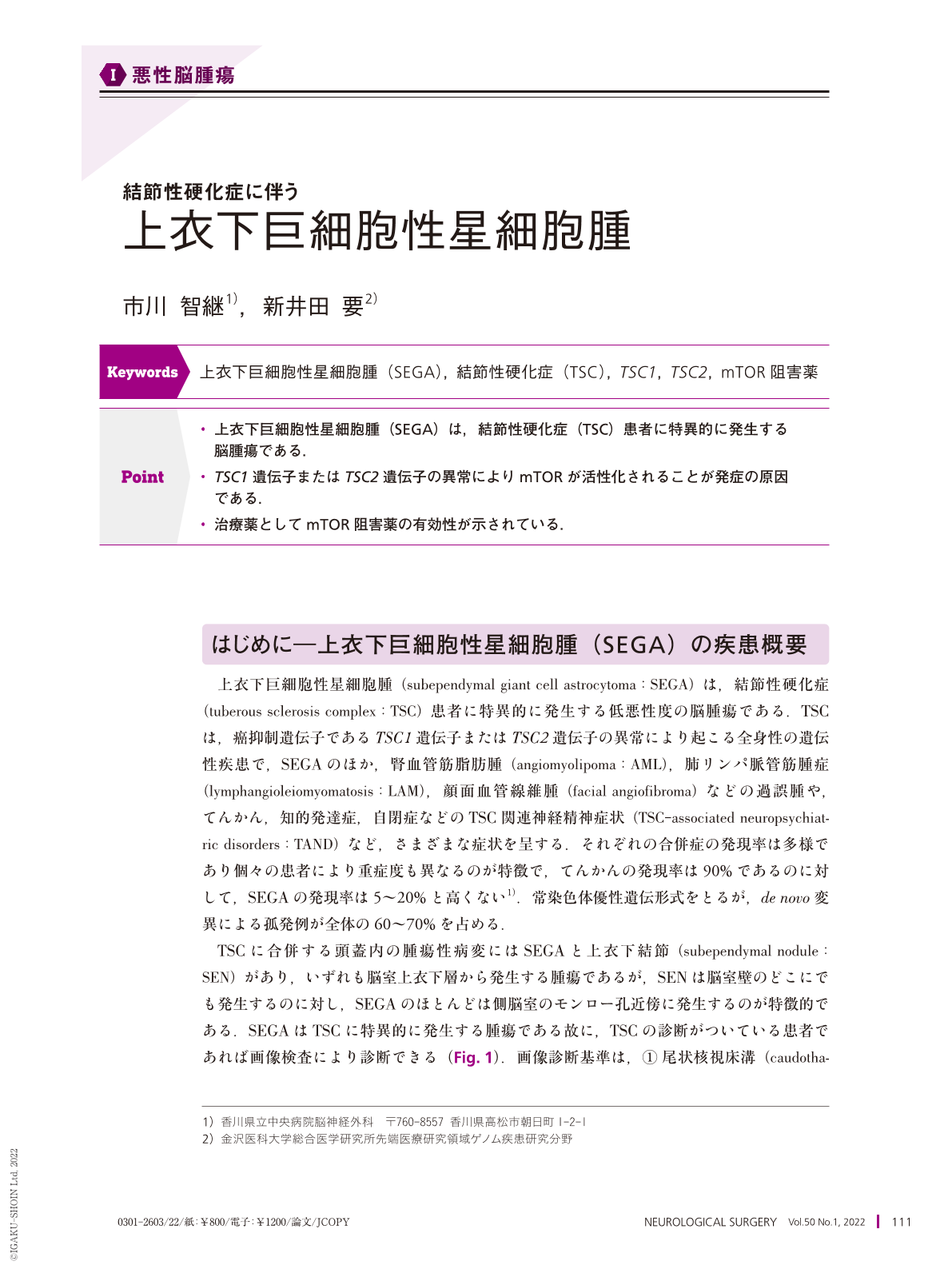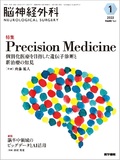Japanese
English
- 有料閲覧
- Abstract 文献概要
- 1ページ目 Look Inside
- 参考文献 Reference
Point
・上衣下巨細胞性星細胞腫(SEGA)は,結節性硬化症(TSC)患者に特異的に発生する脳腫瘍である.
・TSC1遺伝子またはTSC2遺伝子の異常によりmTORが活性化されることが発症の原因である.
・治療薬としてmTOR阻害薬の有効性が示されている.
Subependymal giant cell astrocytoma(SEGA)is a low-grade brain tumor occurring specifically in patients with tuberous sclerosis complex(TSC). TSC is an autosomal dominant genetic disease affecting multiple body systems and with wide variability in presentation. SEGA usually arises around the caudothalamic groove near the foramen of Monro, and can therefore cause life-threatening complications due to hydrocephalus. SEGA develops due to complete loss of function of the TSC1/TSC2 complex through a two-hit mechanism of biallelic inactivation of the TSC1 or TSC2 gene, leading to activation of mammalian target of rapamycin(mTOR). Identification of a pathogenic variant in TSC1 or TSC2 is sufficient for the diagnosis of TSC. Individuals with SEGAs presenting with acute deterioration due to obstructive hydrocephalus should undergo urgent surgical treatment. mTOR inhibitors have been shown to prevent SEGA growth in patients with TSC. Treatment with mTOR inhibitors is primarily recommended for individuals with non-acute symptomatic or asymptomatic growing or large SEGAs and those who are not surgical candidates or prefer medical treatment over surgery. Long-term treatment with mTOR inhibitors efficiently reduced SEGAs and prevented hydrocephalus. The surgical risks, potential side effects of mTOR inhibitors, and effect on other TSC manifestations should be considered so that the best treatment option is selected.

Copyright © 2022, Igaku-Shoin Ltd. All rights reserved.


